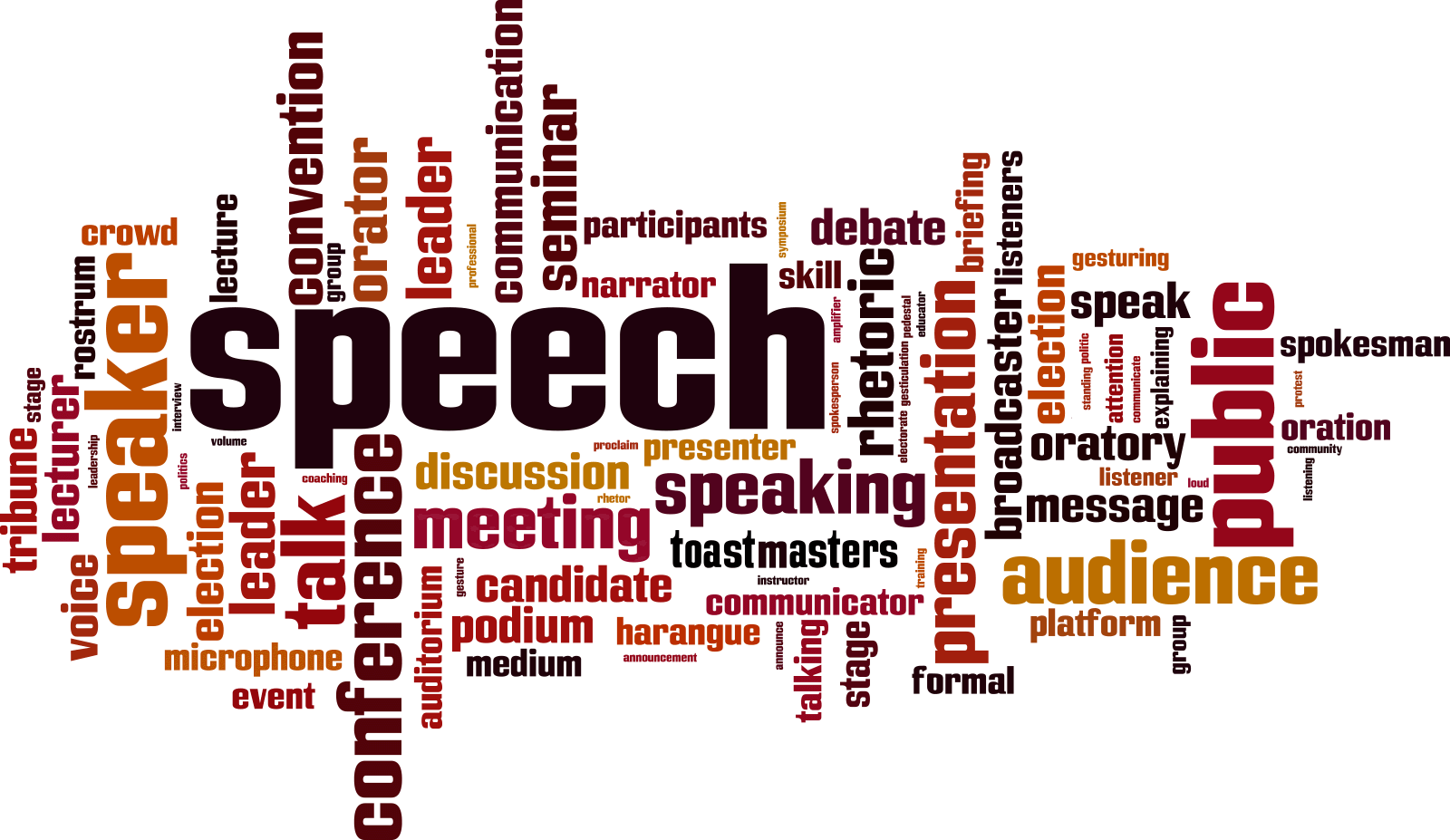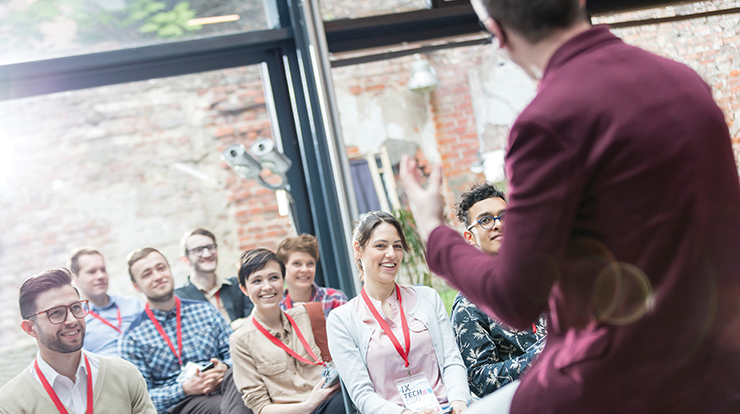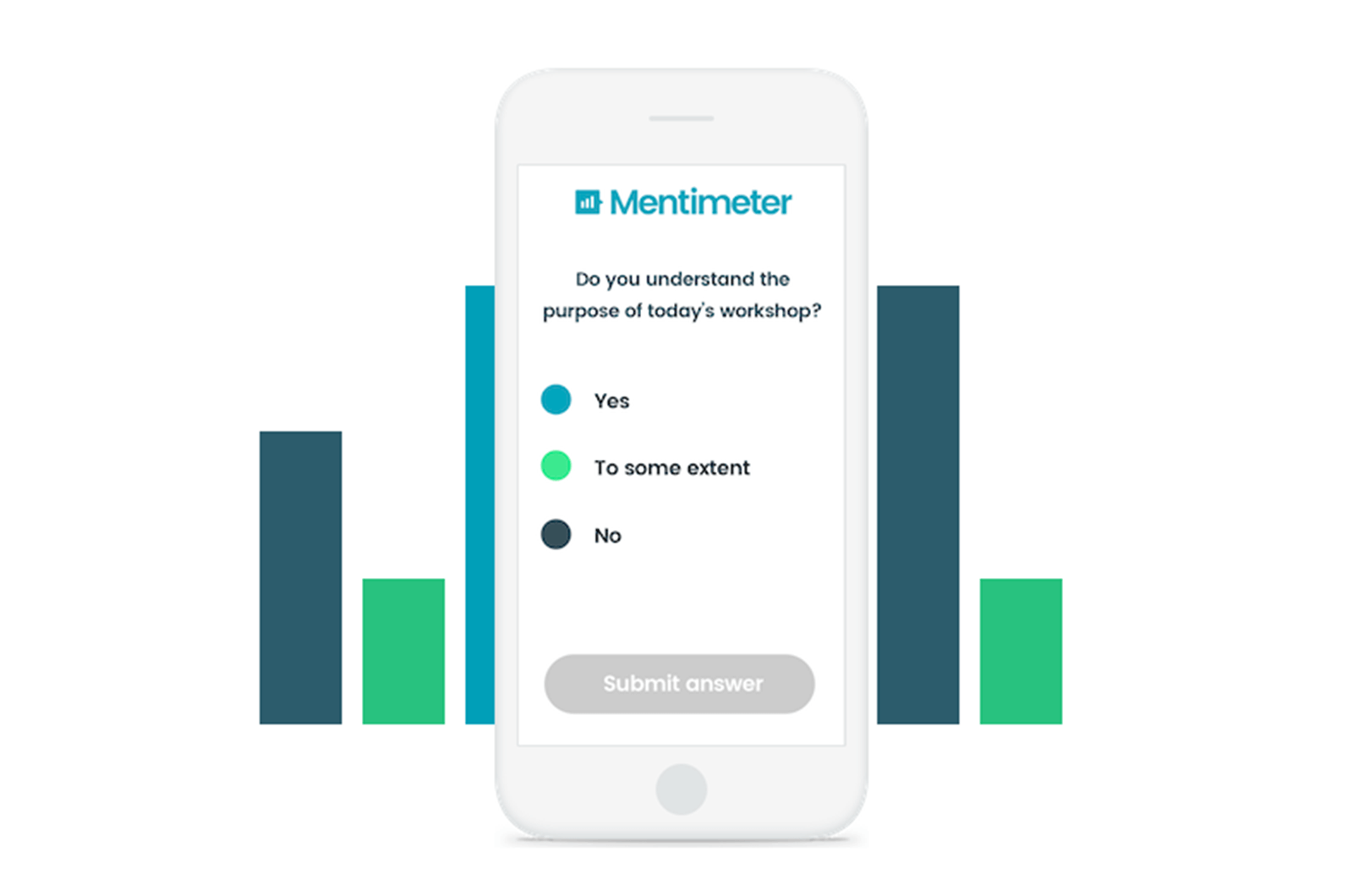As Toastmasters, we often focus on perfecting the “classic” speaking style, which is basically one-directional: a monologue on stage. This is an important skill to master. Thanks to technology, speakers now have the opportunity to take their craft to the next level and make speeches more interactive, turning monologues into dialogues with the audience.
As a result, the roles of speaker and audience are changing. “One viewpoint is as a speaker, you used to be the ‘expert’ in the room. Today you’re more of a ‘facilitator of learning,’ pulling best ideas from the audience,” says former president of the U.S National Speakers Association Scott Friedman. “You’re not the sage on the stage, but the guide on the side. Understand that there’s more wisdom in front of you than in front of them.”
I think the truth is in the middle: True and great interaction comes when there is a combination of both the expert’s view and his or her inspiration, as well as the collective knowledge of the audience. How can a speaker make this happen?
The standard, raise-your-hand method of audience participation will not deliver this result. Imagine asking your audience of 25 Toastmasters what they think will be the biggest impact of technology on society. You might get some people to shout a couple of words. You could ask one or two members additionally. You could ask for a show of hands to indicate a preference…. Or, with certain tools I’ll describe here, you can ask them to send one word to a certain phone number or website. And then a word cloud of all the audience members’ responses starts appearing and building up in front of everybody’s eyes. You will see some words getting mentioned more often. Other words are displayed just once. The result? A true joint creation of the speaker and the audience.
Great interaction is exactly that: a connection of your wisdom with the audience’s wisdom to create something unique for that moment. To use an analogy, it is like the interplay of a great swarm, like the murmuration of starlings that flock and create something beautiful.
To build and lead this swarm, speakers need a new kind of skill, and here technology comes into play. One example is the use of hashtags (#) on social media. Many speakers and event organizers use a specific hashtag (for instance #TMCON2018 at last year’s Toastmasters International Convention) to solicit live feedback and reactions during a presentation, or an entire conference. Audience members can use this hashtag to respond immediately on social media platforms like Twitter, Facebook or Instagram. But new tools and websites allow the speaker and audience members to directly connect via technology.
Audience Expectations
As listeners are increasingly more accustomed to the immediacy of social media, they may want to contribute in real time and have their voices heard. How does a Toastmaster craft a speech that rises to the standards of new technology and audience expectations? Think of it as turning a speech into a dialogue instead of a monologue.
Here are some classic techniques of audience interaction:
- Show of hands: Ask the audience their estimate toward a closed question. After they have raised their hand for the 15th time during a blast of questions, audience members get tired.
- The open question: Ask a specific, open question, like: “What have you learned when attending … ?” This can work, but the speaker may not get the expected answer—or no one answers.
- Reflection: This is another great tool in the toolbox of every presenter: Let people think and reflect, write down a sentence or fill out a checklist.
- Discussion: Let people discuss something among themselves, in groups of two or three or more. Then debrief on the results.
These remain reliable techniques and they belong in every speaker’s toolbox. However, they can only take you so far, and they don’t fully tap into the wisdom of the crowd, or what I call “the swarm.”

To fully tap into an audience’s collective knowledge, speakers can take advantage of recent technologies to create something with the audience and potentially change the course of the session. For example, I recently gave the keynote speech at a Fortune 500 company. Hundreds of leaders were gathered to work on leadership. After my keynote, which lasted an hour, we went into exploration mode. The company outlined nine improvement areas of leadership, such as communication and feedback. Participants voted on the top three aspects, and the full room was divided into three groups to find solutions for these three areas. In the end, the solutions from the different tables were crowdsourced, building on my keynote and then making it relevant to audience members as they collectively decided during the voting. This was unique in that it allowed participants to discuss and choose to implement the areas most relevant to them.
The main technologies for interactions like this are reliable and accessible. They can be used at Toastmasters meetings but also during corporate meetings, live and virtually. Many services exist that let you tap into the power of radical interaction.
“Modern technology now makes it possible for a speaker to develop thoughts and ideas together with the audience in real time.”
Here are some suggestions for incorporating more real-time audience interactions:
- Polling: This is fundamentally a voting mechanism, similar to a “show of hands,” or a Facebook poll. It gives live results of audience reactions to a set of choices and is extremely powerful because it’s anonymous. I used it during my keynote described earlier. Programs such as Cisco Webex or Mentimeter.com allow your audience to vote or respond to a question posed to them.
- Word clouds: Audience members send their own input to a question, and a word cloud is formed by their answers. The more times the same word is mentioned, the bigger that word gets. The value of this is creating breadth and depth simultaneously: Individual input is heard, but everyone can see what the audience as a whole thinks. I experienced this where all the parents of a school were asked at a gathering to send “one word that would make the school great.” The cloud started to form and everybody in the room got an idea of what was on people’s minds.
- Upvoting: People ask questions and type them into an app on their phones or tablets. Those with access to the meeting app see the questions and then “upvote” them. This has the advantage of showing the speaker or moderator only the questions with high focus and votes.
- Hashtags: You provide a #hashtag for your event and people can see the results and what other people share in real time. This works especially well on Twitter, Facebook, Instagram and LinkedIn.
- Live viewing of documents: This low-tech technique allows the speaker to share a screen of a Microsoft Word or Excel file, for example, and then write immediately, while the audience can also see what is being written. Combine this with the above mentioned voting, upvoting and word cloud features, and you can create a document together with your audience.
- Live discussion: This is being used by students who create live notes documents of lectures, for instance via collectively editing a Google Document. You can see what everybody else thinks and add your thoughts and questions to it.
Whereas there used to be a clear distinction between a speaker and a moderator/facilitator, modern technology now makes it possible for a speaker to develop thoughts and ideas together with the audience in real time. To get started, I recommend identifying one or two areas where you are truly interested in the audience’s view and try out a technology solution. A Toastmasters meeting can be a fantastic training ground for this. Or maybe you are the club president and want to have live feedback on one of your proposals? Do it directly in the meeting.
The techniques described in this article require a new type of attitude from a speaker: someone who does not only want to have a monologue, but who also wants to explore and develop the topic with the audience. The speaker taps into the wisdom of the audience while also sharing his or her own knowledge and inspiration. This can lead to new and exciting forms of content, a new dimension of interacting with an audience.
Lars Sudmann, DTM is a keynote speaker and author, whose TEDx Talks have been viewed more than 500,000 times. He was an education session presenter at the 2018 Annual Toastmasters Convention in Chicago. Learn more at www.lars-sudmann.com and his newsletter, "The Power of Three."



 Previous
Previous
 Technology for Club Meetings
Technology for Club Meetings
 Previous Article
Previous Article


